
How to Use D1 mini ESP32: Examples, Pinouts, and Specs
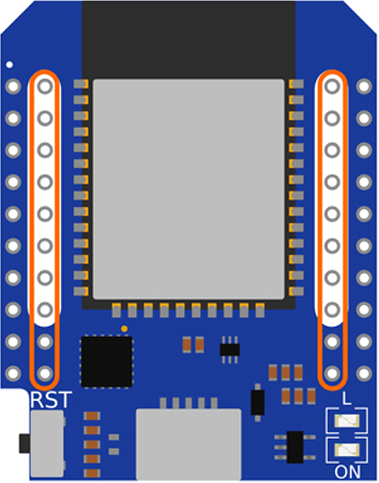
 Design with D1 mini ESP32 in Cirkit Designer
Design with D1 mini ESP32 in Cirkit DesignerIntroduction
The D1 mini ESP32 by AZ-Delivery is a compact and versatile microcontroller board based on the powerful ESP32 chip. It combines Wi-Fi and Bluetooth capabilities, making it an excellent choice for Internet of Things (IoT) projects, home automation, and rapid prototyping. Its small form factor and built-in USB interface allow for easy programming and integration into various applications.
Explore Projects Built with D1 mini ESP32
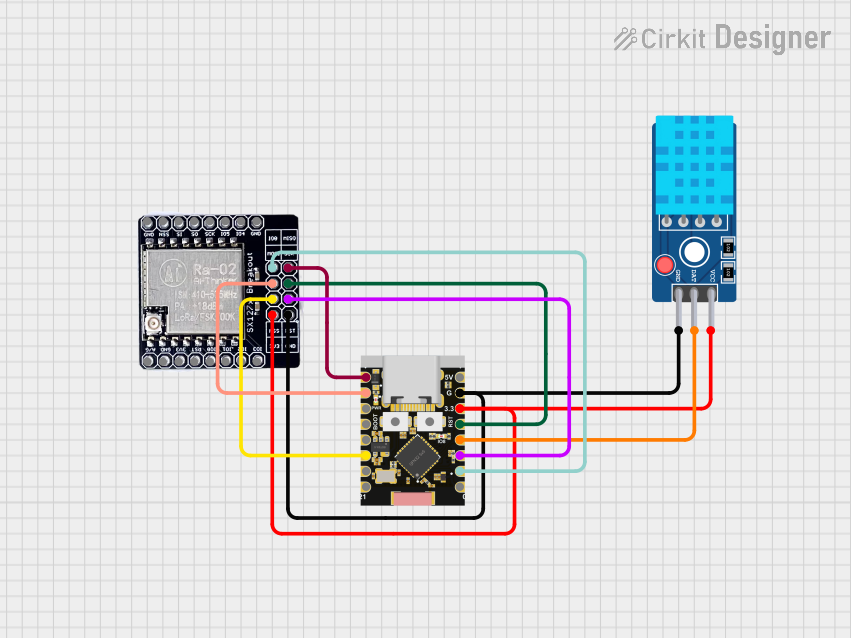
 Open Project in Cirkit Designer
Open Project in Cirkit Designer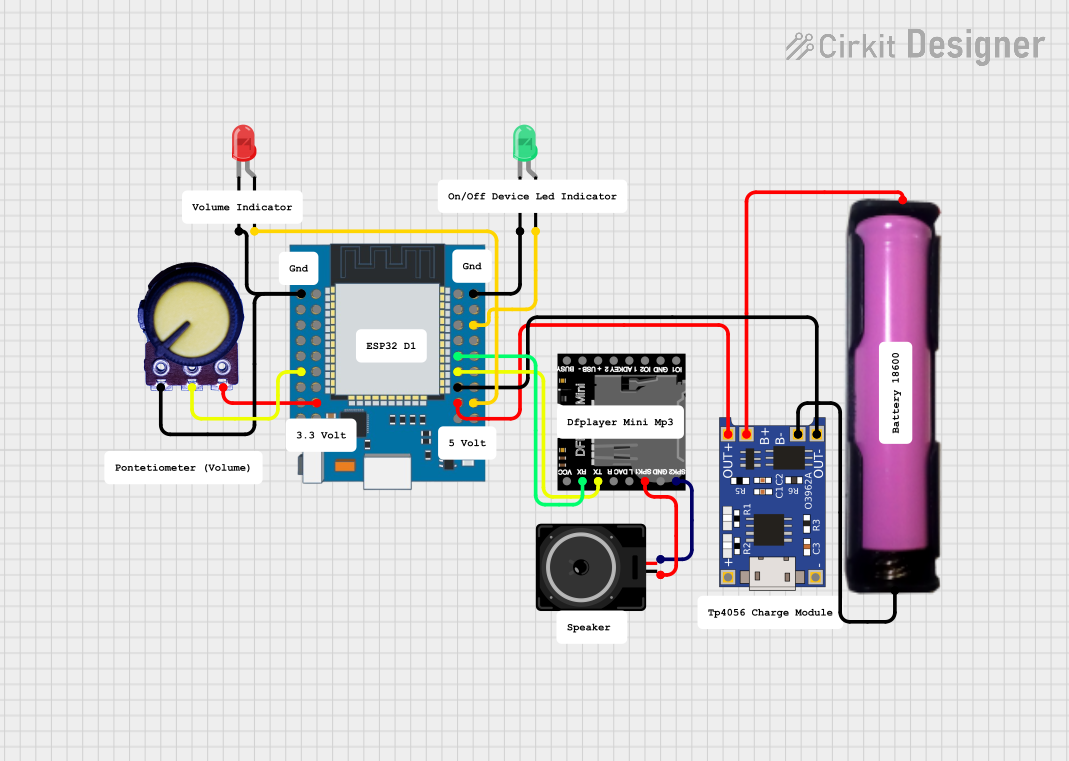
 Open Project in Cirkit Designer
Open Project in Cirkit Designer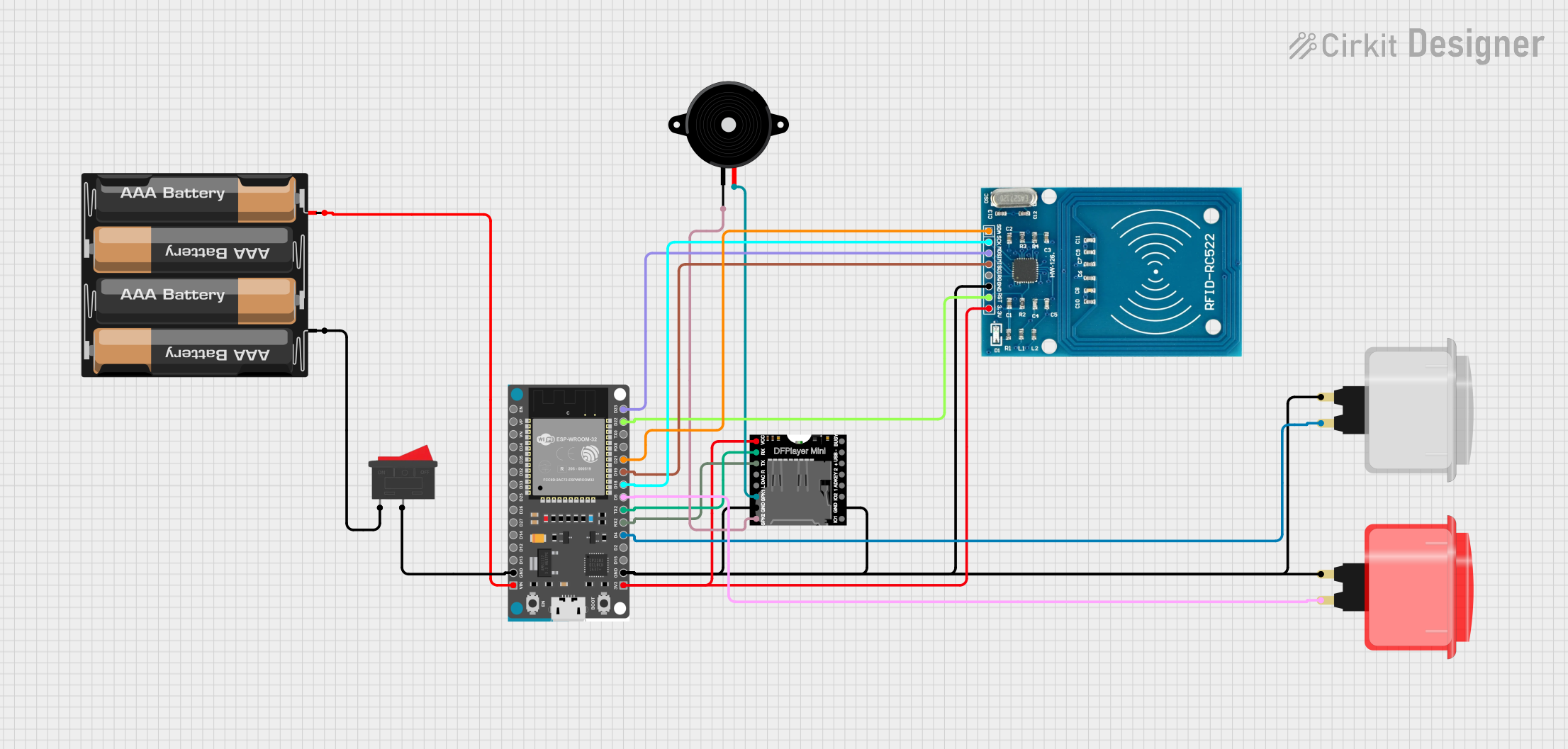
 Open Project in Cirkit Designer
Open Project in Cirkit Designer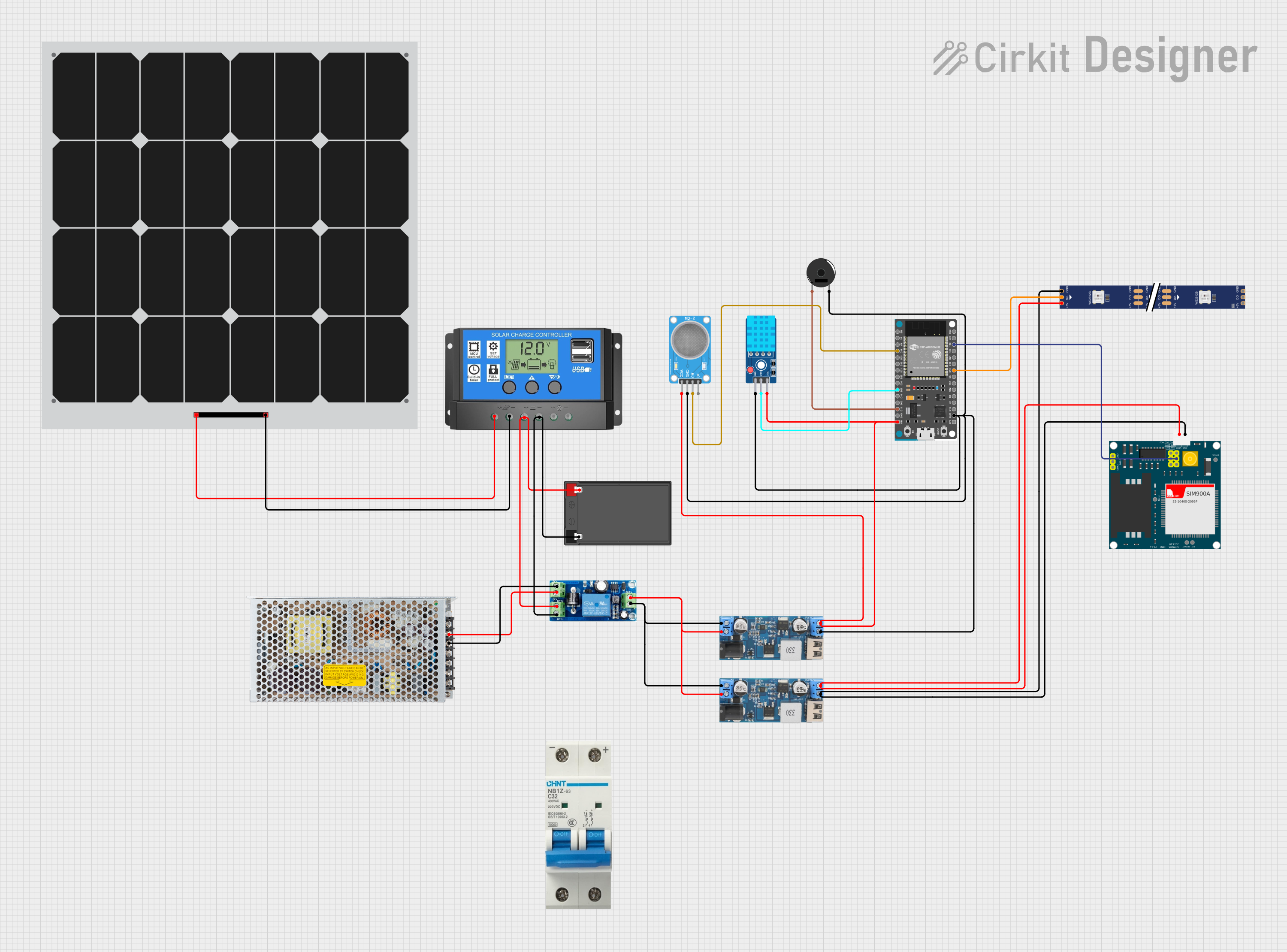
 Open Project in Cirkit Designer
Open Project in Cirkit DesignerExplore Projects Built with D1 mini ESP32

 Open Project in Cirkit Designer
Open Project in Cirkit Designer
 Open Project in Cirkit Designer
Open Project in Cirkit Designer
 Open Project in Cirkit Designer
Open Project in Cirkit Designer
 Open Project in Cirkit Designer
Open Project in Cirkit DesignerCommon Applications and Use Cases
- IoT devices and smart home systems
- Wireless sensor networks
- Remote monitoring and control
- Bluetooth-enabled devices
- Prototyping and educational projects
Technical Specifications
The D1 mini ESP32 is designed to provide robust performance in a small package. Below are its key technical details:
Key Technical Details
| Parameter | Specification |
|---|---|
| Microcontroller | ESP32 |
| Wireless Connectivity | Wi-Fi 802.11 b/g/n, Bluetooth 4.2 |
| Operating Voltage | 3.3V |
| Input Voltage (via USB) | 5V |
| Flash Memory | 4MB |
| SRAM | 520KB |
| GPIO Pins | 11 |
| Analog Input Pins | 1 (12-bit ADC) |
| Digital I/O Pins | 11 |
| PWM Output | Supported |
| Communication Protocols | UART, SPI, I2C |
| Dimensions | 34.2mm x 25.6mm |
Pin Configuration and Descriptions
The D1 mini ESP32 features a compact pinout. Below is the pin configuration:
| Pin Name | Function | Description |
|---|---|---|
| 3V3 | Power Supply | Provides 3.3V output for external components. |
| GND | Ground | Common ground for the circuit. |
| D0-D10 | Digital I/O | General-purpose digital input/output pins. |
| A0 | Analog Input | 12-bit ADC for reading analog signals. |
| TX | UART Transmit | Transmits serial data. |
| RX | UART Receive | Receives serial data. |
| EN | Enable | Enables or disables the ESP32 chip. |
| RST | Reset | Resets the microcontroller. |
Usage Instructions
The D1 mini ESP32 is easy to use and program, making it ideal for beginners and advanced users alike. Below are the steps and best practices for using the board in a circuit.
How to Use the D1 mini ESP32
Powering the Board:
- Connect the board to your computer or a USB power source using a micro-USB cable.
- Ensure the input voltage is 5V via USB or 3.3V via the 3V3 pin.
Programming the Board:
- Install the Arduino IDE and add the ESP32 board support package.
- Select "D1 mini ESP32" or a compatible ESP32 board from the Tools > Board menu.
- Connect the board to your computer and select the appropriate COM port.
- Write your code and upload it to the board.
Connecting Peripherals:
- Use the GPIO pins (D0-D10) for digital input/output.
- Use the A0 pin for reading analog signals (e.g., sensors).
- Connect external components like LEDs, sensors, or relays as needed.
Example Code for Arduino IDE
Below is an example code to blink an LED connected to pin D1:
// Example: Blink an LED on D1 mini ESP32
// This code blinks an LED connected to GPIO5 (D1).
#define LED_PIN 5 // Define the pin connected to the LED
void setup() {
pinMode(LED_PIN, OUTPUT); // Set the LED pin as an output
}
void loop() {
digitalWrite(LED_PIN, HIGH); // Turn the LED on
delay(1000); // Wait for 1 second
digitalWrite(LED_PIN, LOW); // Turn the LED off
delay(1000); // Wait for 1 second
}
Important Considerations and Best Practices
- Voltage Levels: Ensure all connected components operate at 3.3V logic levels to avoid damaging the board.
- Power Supply: Use a stable power source to prevent unexpected resets or instability.
- Wi-Fi and Bluetooth: Avoid placing the board near metal objects or sources of interference to maintain strong wireless connectivity.
- Heat Management: The ESP32 chip may get warm during operation. Ensure proper ventilation if used in enclosed spaces.
Troubleshooting and FAQs
Common Issues and Solutions
The board is not detected by the computer:
- Ensure the USB cable is functional and supports data transfer.
- Install the correct USB-to-serial driver for the D1 mini ESP32.
Upload errors in Arduino IDE:
- Check that the correct board and COM port are selected in the Tools menu.
- Press and hold the "BOOT" button on the board while uploading the code.
Wi-Fi connection issues:
- Verify the SSID and password in your code.
- Ensure the router is within range and not blocking the ESP32.
Analog readings are inaccurate:
- Ensure the input voltage to the A0 pin does not exceed 3.3V.
- Use a voltage divider if necessary to scale down higher voltages.
FAQs
Q: Can I power the D1 mini ESP32 with a battery?
A: Yes, you can power the board using a 3.7V LiPo battery connected to the 3V3 pin or a 5V source via USB.
Q: Does the D1 mini ESP32 support deep sleep mode?
A: Yes, the ESP32 chip supports deep sleep mode for low-power applications. You can use the esp_deep_sleep() function in your code.
Q: Can I use the D1 mini ESP32 with MicroPython?
A: Yes, the board is compatible with MicroPython. You can flash the MicroPython firmware and program it using Python.
Q: What is the maximum current output of the GPIO pins?
A: Each GPIO pin can source or sink up to 12mA safely. Avoid exceeding this limit to prevent damage.
By following this documentation, you can effectively use the D1 mini ESP32 for your projects and troubleshoot common issues with ease.